Featured Stories
The Blues Ain’t Nothin’: But a Feelin’ Getting Down ‘n’ Gutbucket at the San Diego Blues Festival
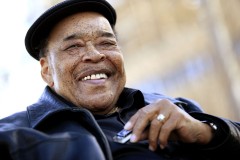
James Cotton. Photo by Christopher Durst.
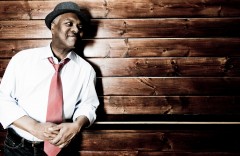
Booker T. Jones
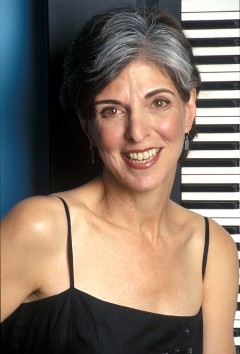
Marcia Ball
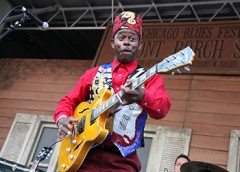
Lil’ Ed & the Blues Imperials
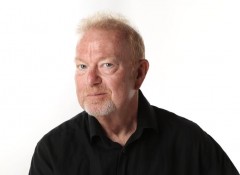
Blues Festival organizer Michael Kinsman
Geographically speaking, when you conjure up notions of “the blues,” rarely does one think of San Diego, or, for that matter, California. Clarksburg, Mississippi; Chicago; Memphis; New Orleans: these are the crucial crossroads where the traditional swamp, sweat, and sting of indigenous living continue to be transformed into an artistic gumbo of the soul. The gospel according to W.C. Handy: blues as soul balm. Praise Jesus! I feel sanctified by the very idea.
The Blues: it’s as sturdy a means to emote that we humans have — a primal expression, containing both mystical and magical properties. And it can also claim pride of place as one of the few genuine American art forms of the 20th century, to be spoken of in the same rarified air as comic books, jazz, and rock ‘n’ roll.
However, over the course of the past 17 years, this little metropolis of ours has made an indelible name for itself in the nation’s blues consciousness with the annual two-day San Diego Blues Festival that takes place behind Seaport Village in the Embarcadero Marina Park North. Established in 1998 by former Union-Tribune journalist and blues enthusiast Michael Kinsman, the SDBF has turned out to be one of the premier blues events in the country. This year promises to be the best yet in the festival’s history, with an array of top-notch artists, including blues legend James Cotton headlining on Saturday, and Stax records R&B pioneer Booker T. Jones on Sunday.
“I started the San Diego Blues Festival as a single day event in ’98,” says Kinsman. “I ran that for six years [until 2003] with Volkswagen as my title sponsor. And it was reasonably successful, but we didn’t get the numbers we needed. I was a small guy competing in a big guy’s world. I lost my site to the symphony at Embarcadero South. I was having trouble getting a headliner, and then I lost my title sponsor. My partners and I owned it at that time, and we lost a lot of money. We had a great little festival, but we had bad weather and ticket fraud. We couldn’t pull it together for 2004 and we just decided ‘it’s bad karma, let’s pack it in,’ and it broke my heart.
“Aimloan.com had been a minor sponsor and its president and founder, Vince Kasperick, who is a friend of mine, was always bugging me about doing it again and I would kind of shrug him off.
“But Vince has a condo in Portland, Oregon, and they have a big waterfront blues festival up there over the 4th of July weekend, and he would be up there every year. And one year [in 2010] I went up there just to talk him out of ever doing a blues festival, because it’s a very tough business. My heart had been broken and I didn’t want to be stupid about things.
“So we walked every inch of the grounds and I explained to Vince how the festival was organized: they host it right by the river with four stages. I told him we could never get away with this in San Diego. We have a lot of restrictions here that they don’t have in Portland. San Diego is an expensive place to do this kind of work. But he started talking about money, and he threw out 50 or 100 thousand dollars [as a figure] and my ears kind of perked up — we’re talking serious money here. So we came back, and I put together a budget, and we approached the Food Bank and met with the chairman and the CEO and a development person and they bought the idea. Basically, we walked in with our pitch. ‘Here’s the festival: I have the blueprint, I know how to run it, and Vince has the money to get you started. Run with our vision, and you get to keep the profits.’ The only downside is that the Food Bank has to raise sponsorship money. The festival is all geared around sponsorships. Our goal is to have sponsors pay for everything, so that every ticket, and every vendor fee becomes profit. At least that’s how it works on paper. That’s the theory. We’re not there [yet], but we’re working towards it. It’s still a young festival.”
Ever since the San Diego Blues Festival revved back up, it has remained financially in the black, with the Jacobs & Cushman San Diego Food Bank raising $25,000 in 2011, $75,000 in 2012, and $125,000 in 2013. When the festival expanded from one day to two in 2014, it cleared $130,000. All of that profit goes 100% to the Food Bank to feed local San Diegans in need.
Kinsman says “that in addition to the expenses of administering the festival, there is, of course, the task of paying all of the musicians, marketing the festival, insurance, stage sound, lighting, power, and design work. And that doesn’t even take into account all of the people who volunteer to keep the festival running smoothly.
“On the day of show we use around 130 volunteers: basically, it’s all volunteer driven, with the exception of a few Food Bank staff members who work there, and me. That can make it hard to have continuity, where everyone knows their job. But we’re getting to the point where the Food Bank knows their role, they’re getting familiar with the process. For instance, last year I walked backstage, where there is always something for me to do. And I looked around, and I watched some guys handling the artists, and it was great. They were doing exactly what I would’ve done. And I went ‘Oh!’ We turned a corner here. I don’t have to tell everybody what to do. I watched for about ten minutes and thought ‘I’m not needed here,’ for the first time in four years. So I walked out and found some friends and sat with them for 15—20 minutes and watched the show and I thought ‘This is great to sit out here and enjoy it!’ I had no idea it was fun. My goal every year is to watch five minutes of every band, and I’ve never made it.
“So I didn’t do it for eight years and then we resurrected it in 2011. The San Diego Food Bank actually owns it and they hired me to run it, so I don’t have to mortgage my house when the festival is done, which is kind of a nice feeling.”
In addition to producing the San Diego Blues Festival, Kinsman also puts on the annual OB Oktoberfest. And for blues lovers who can’t get enough of a good thing, Kinsman can be heard promoting the music that he’s so passionate about on KSDS Jazz 88 every Saturday night from 8pm to midnight on his Every Kind of Blue program, a slot that he inherited last October from his friend “T.”
As for what kind of qualifications it takes to be a bluesman these days, Kinsman says that he doesn’t “think there are any qualifications. I can’t even tell you what blues is. My definition of the blues is: ‘I know it when I hear it.’ It’s very loose, but it works for me. It could be the lyrical content, or the chord structure, or it could just be the feel of the music for me.”
And why is the San Diego Blues Festival so successful now in it’s second incarnation? “Because I’m a lot smarter than I was then,” he says laughing. “And I have a base sponsor that is great. And the Food Bank is kind of a magical institution for raising money. That’s their mission, to go out and raise money for the festival.
“If I was going to find a bluesy place, it would not be San Diego [laughs]. But I love the music and I love exposing it to my friends. Initially, my friends would come only because they wanted to support me, but invariably they would say, ‘This music is really great.’ The general population today, outside of certain regional pockets, does not get exposed to the blues. In San Diego, unless you happen upon Jazz 88 or something going on in a club, you’re probably not going to hear much blues. But then if you watch a TV commercial, there’s blues music on every fifth TV commercial. Now if you or I were to make a TV commercial, we’d use blues music because we like it. It’s not an accident. Marketing people use the blues because it has an immediate, magnetic force that pulls people in right away. It’s a very gut-level thing. And it connects with people; it doesn’t matter what you’re selling, it pulls you in and makes you lean toward it.”
Like a firm handshake or the embrace of a dear friend, that is but one example of why the blues are so vitalizing and compelling. It can rock you in your cradle and it can soothe whatever is ailing you. Baby, there is nothing like the blues: the ultimate silver lining from America’s shadowy past.
Here is the lineup for the 2015 San Diego Blues Festival:
Saturday on the Park Stage: Bubba McCoy, Tomcat Courtney, Chris James & Patrick Rynn with Henry Gray, John Mooney. Saturday on the Bay Stage: Whitney Shay with the Robin Henkel Band, The Paladins, Marcia Ball, James Cotton.
Sunday on the Park Stage: Euphoria Brass Band, Bill Magee Blues Band, Billy Thompson, Kim Wilson with Anson Funderburgh. Sunday on the Bay Stage: Sue Palmer & Her Motel Swing Orchestra, Nathan James & the Rhythm Scratchers, Lil’ Ed & the Blues Imperials, Booker T. Jones.
The San Diego Blues Festival takes place on Saturday, September 26, and Sunday, September 27. For more information go to www.sdbluesfestival.com.






